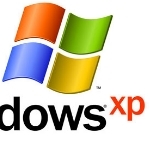
By Bill Pytlovany
What happens when you have four different security programs installed on a computer? It’s a lot like watching a slow turtle crossing the street. You sit, you wait, you stare and most of the time there’s a crash before it’s over.
I frequently have friends drop off their laptops along with the comment and the question, “It runs REALLY slow, do I have a virus?”.
Case Study: Bob’s Laptop
This week’s computer maintenance task was typical. There was no malware, trojan horse, key logger, virus or even rootkit on Bob’s laptop. So why did it take 10 minutes to boot and run so slow? Turns out there were four, yes four different security suites installed.
One of them was McAfee which had expired last year but was still running five different services. I suspect it came pre-installed when he purchased the computer two years ago. Even after running the uninstaller, I still had to manually remove more McAfee programs including a reminder service just in case Bob changed his mind in the future.
Next I started to remove the Anti-Virus packages which also hadn’t been updated in the last six months. First I removed Window Defender from Microsoft. I’ll elaborate more below but the newer Microsoft Security Essentials from Microsoft does what Defender did and much more.
When I removed CA Internet Security I immediately noticed a different in computer performance. I don’t mean to imply CA was the problem but at least we were down to a single Anti-Virus Suite. It still wasn’t as fast as I’d like but it was a vast improvement to be down to a single suite hooked into the Window kernel.
The last suite to remove was Symantec’s Norton 360. I’m not a big fan of Norton but there are some folks at Symantec who I respect for their support. They’ve become legendary in the industry but this creates a level of trust that makes some users blind to using their software properly. Well known security packages like Norton and McAfee create a false sense of security. Users bypass learning how to properly use the product and they fail to configure the software. They often miss out on updated signature files designed to catch new threats.
I had a personal experience of this over confidence from the mayor of my home town Village of Scotia. Once a week his computer sends me an Email with an link that I obviously shouldn’t click on. When I reported this, his response was “I’m sure my Norton will take care of it”. The mass mailer bot using his address book continues even as I was preparing this article.
Clicking on the link will take users to a page that appears to be an advertisement for Canadian drugs. Unfortunately,clicking the wrong click to escape and the ad will make an attempt to infect the next person helping to spread the malware.
I finally removed all the security programs from Bob’s computer and it ran fast enough for me to provide some regular maintenance steps needed to speed things up like deleting temp files, defrag his disk, and I used WinPatrol to remove all the crap that didn’t need to be auto starting every time he rebooted.
This post is excerpted with Bill’s permission from his So What’s the Answer?
This post is excerpted with Bill’s permission from his blog




